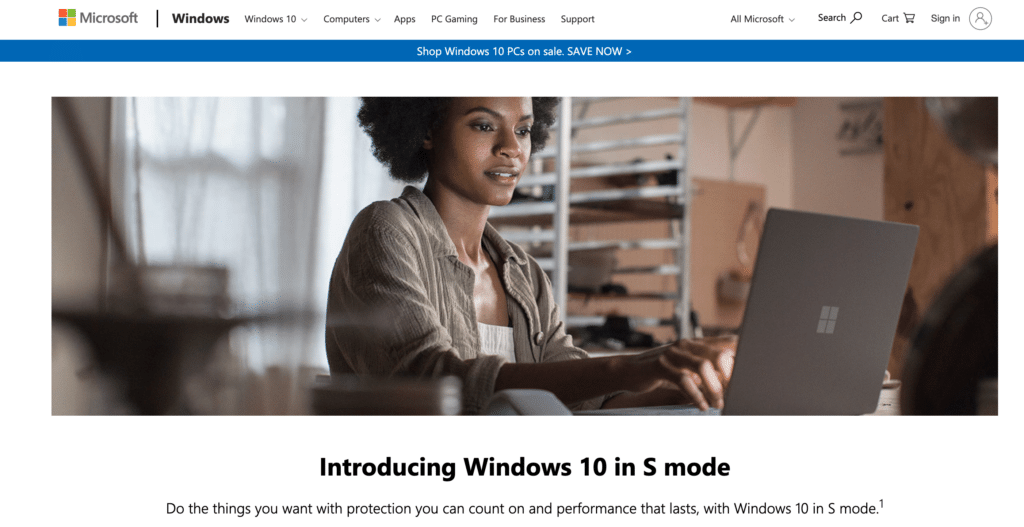Victoria Thompson
What is S mode?
This post was inspired by a colleague who came to me the other day inquiring about how to disable her son’s computer from S mode. She was vaguely familiar with it, but needed help getting it off of the computer. It brings back many moments when people ask me “hey, what’s S mode?
S mode is a version of Windows 10, effectively meant to increase security for folks that are using Windows 10. It allows apps only from the Microsoft Store, and requires Microsoft Edge for safe browsing. The secure part comes from this: by only allowing its own apps and resources, you get a more streamlined and safeguarded experience. I typically refer to it as a “parental control” option of Windows 10, although it doesn’t necessarily mean that–it’s a safe, controlled Windows 10 experience. I find many benefits of it for “early” Internet users, including young children (such as students grades K-2).
Great for Littles
It’s important to note that S mode means no third-party apps and no third-party security software. Additionally, S mode users must use Edge as their default search engine. Basically, if it comes to a Windows PC via a third party, S mode will not recognize it at all…and this includes web browsers, which was a dealbreaker for my colleague (and perhaps many others). Her son wanted to go on a third party browser and could not because the computer was in S mode.If you’re curious about S mode, especially if you have small children or work with younger learners, I definitely advise that you check it out. Microsoft has a great FAQ here that addresses questions about S mode.
About The Author
Victoria Thompson is a STEM Integration Transformation Coach at Technology Access Foundation–a nonprofit leader redefining STEM education in public schools–a consultant for Ignite EdTech, and a learning specialist for NCCE. She has been in education for five years and began her journey teaching fifth and sixth grade math and science in Summerville, SC. After completing her masters degree in curriculum and instruction she moved to the Seattle, WA area in 2018, where her career has pivoted to focusing on STEM integration in schools, K-12 mathematics instruction with research on decolonizing mathematics curriculum for teachers and learners, creating inclusive math environments, and using technology to bridge equity gaps in math education. She has presented at ISTE, ImpactEducation, CUE, and DigCitSummit on topics such as creating inclusive math classrooms, culturally responsive STEM education, and equity in educational technology. Additionally, she was recently awarded the title of one of the top 30 K-12 IT influencers in 2021 by EdTech Magazine.









